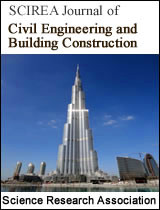Barrier-Free Accessible Environment and Kamlapur Railway Station – require to more sustainable.
DOI: 371 Downloads 9214 Views
Author(s)
Abstract
There is, however, limited knowledge of how precisely the needs of disabled people are defined and incorporated, or not, into the design and development for the accessible environment1. This study assumes that the accessible design in public places facilities are of benefit not only to disabled people but all people with the diversity. Thus the significance of the proposed barrier-free design is to focus on benefits of the accessible plan to a variety of people. Accessibility in public places has previously been regarded as an additional services designed especially for those who cannot manage ordinary facilities. Now to design accessible environment in public places is an important issue to maintain the sustainability of our society1. Therefore this paper aims to investigate the barriers and deficiencies for disable people found in railway station and then to provide valuable information on effective design techniques and principles for ensuring barrier-free accessible environment in public places.
Keywords
Barrier-free Design, Railway Station, Public Places, Accessible Environment
Cite this paper
Md. Mustafizur Rahman, Dr. Nobuaki Ohmori,
Barrier-Free Accessible Environment and Kamlapur Railway Station – require to more sustainable.
, SCIREA Journal of Civil Engineering and Building Construction .
Volume 1, Issue 2, December 2016 | PP. 18-33.
References
| [ 1 ] | Imrie, R., (2000), Responding to the Design Needs of Disabled People, Journal of Urban Design, Vol. 5, No. 2, Pp. 199-219. |
| [ 2 ] | Iwarsson, S., and Staeh, A., (2003), 'Accessibility, usability and universal design - positioning and definition of concepts describing person-environment relationships', Disability and Rehabilitation, Vol. 25, No. 2, Pp. 57-66. |
| [ 3 ] | Hassan, S. , Sham, M., Awang, M., Yaman, R., 2012, Accessibility for Disabled in Public Transportation Terminal, Volume 35, Pp 89–96. |
| [ 4 ] | Qureshi, A., 2007, Inclusive Transportation Can Improve Lives of Disabled People, DIIR, India. |
| [ 5 ] | Accessible Train Station Design for Disabled People: A Code of Practice, 2011, Version 03, Department for Transport and Transport Scotland. |
| [ 6 ] | Suen, L. and C. Mitchell., Accessible Transport and Mobility in TRB Proceedings, Committee on Accessible Transportation and Mobility. Paper A1E09. |
| [ 7 ] | ADA Standards for Accessible Design, 1994, 28 CFR Part 36, Department of Justice. |
| [ 8 ] | Peter, W., and Axelson, (1999), 'Designing Sidewalks and Trails for Access; Part I of II: Review of Existing Guidelines and Practices', United States Access Board, America. |

